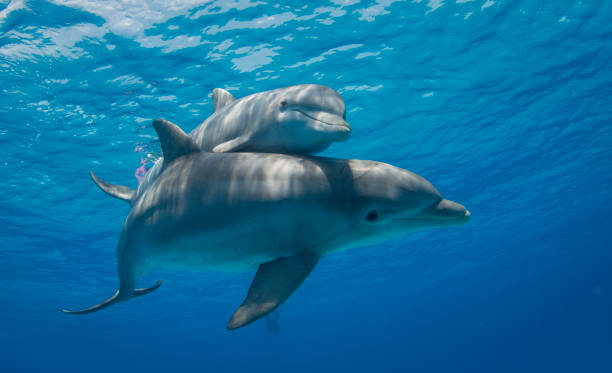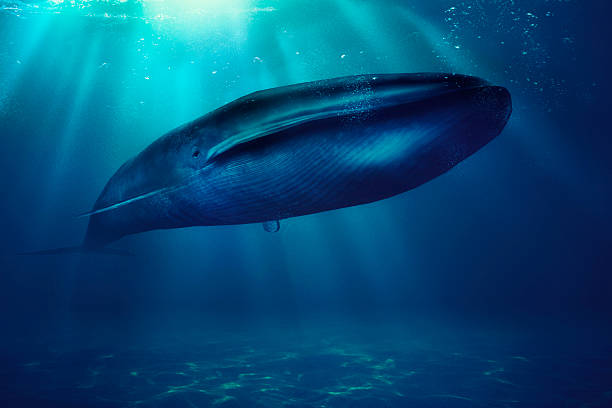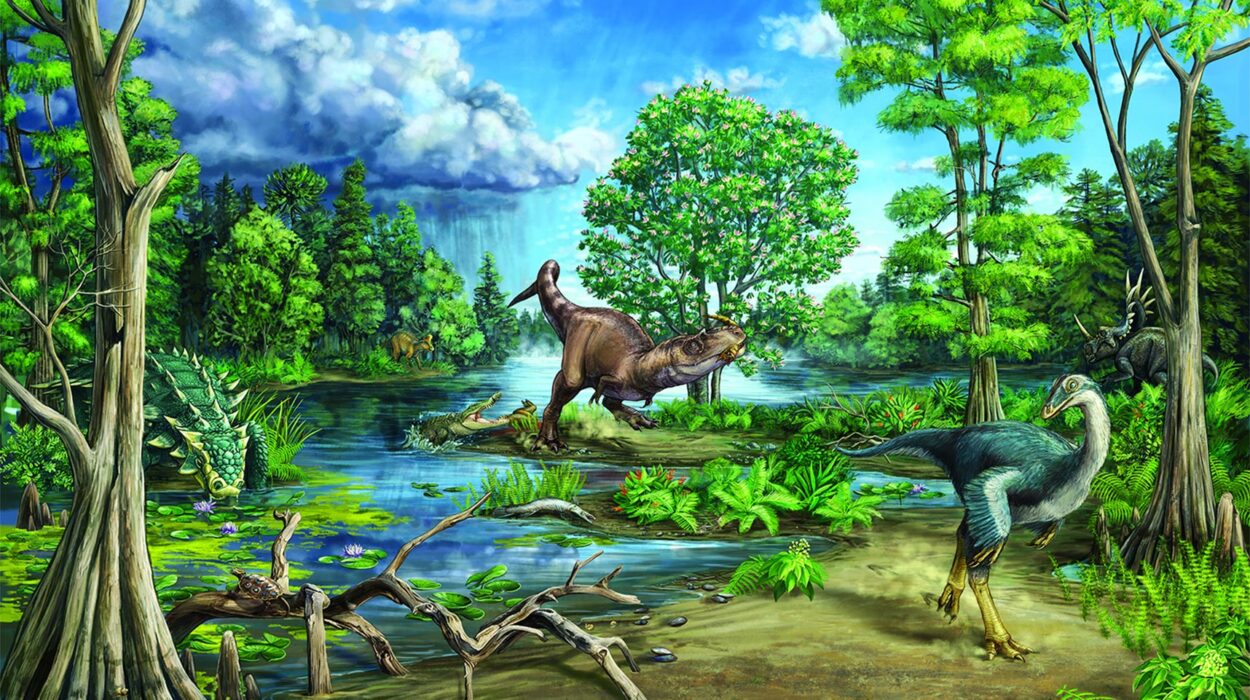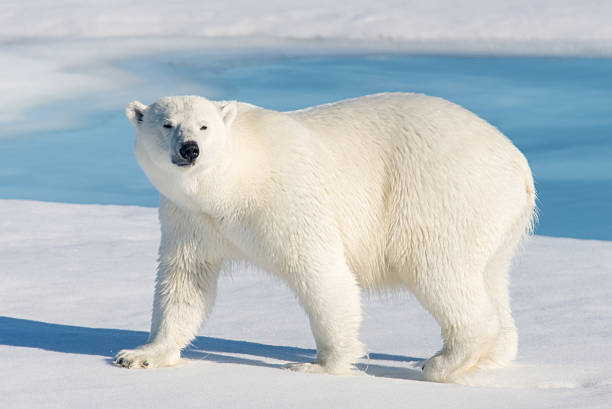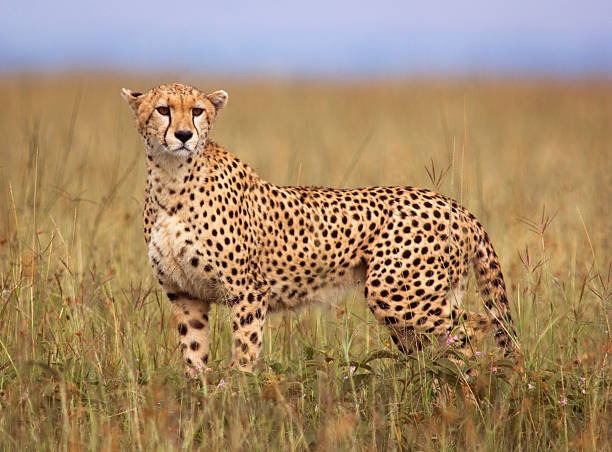Across the living world, life thrives not in solitude, but in symphony. From the depths of the oceans to the high canopies of forests, animals form connections that sustain, protect, and enrich their lives. They hunt in teams, raise young together, warn each other of danger, and even grieve their dead. Their voices—some audible, some silent—form an ancient language that binds species into communities.
For humans, language feels like our ultimate social tool, but communication began long before we learned to speak. It exists in gestures, vibrations, pheromones, and songs—an orchestra conducted by instinct and emotion. Here are eighteen of the most social animals on Earth, and the incredible ways they connect and communicate.
1. Dolphins – The Ocean’s Linguists
Dolphins are among the most intelligent and socially intricate creatures on Earth. Living in pods that can range from a few individuals to hundreds, they maintain complex relationships built on cooperation, empathy, and play.
Their communication is legendary. Dolphins use a symphony of whistles, clicks, and body movements to convey information. Each dolphin even has a unique “signature whistle,” functioning like a personal name. They call to one another across vast distances, respond when called, and can imitate the calls of their friends.
Dolphins also use echolocation—clicking sounds that bounce off objects—to navigate and hunt. Yet beyond survival, these sounds express emotion. Scientists have observed dolphins whistling excitedly when reuniting after separation, or emitting softer sounds while gently playing with their calves. Their voices are not mere noises—they are songs of connection in the endless blue.
2. Elephants – The Gentle Giants of Emotion
No creature embodies empathy quite like the elephant. These gentle giants live in tightly bonded herds led by matriarchs—wise females who guide their families through decades of memory and experience.
Elephants communicate through trumpets, rumbles, and subtle vibrations called infrasonic calls—sounds so low they travel through the ground over miles. These deep vibrations let elephants “talk” even when they can’t see one another, warning of predators or calling loved ones across vast savannas.
Their communication is steeped in emotion. When a calf cries, mothers rush to soothe it. When an elephant dies, the herd gathers, touching the body with their trunks and standing vigil. Scientists describe these behaviors as mourning—a powerful testament to their emotional depth.
Elephants remember, care, and grieve, proving that social bonds in the animal kingdom can be as sacred as those of humans.
3. Honeybees – The Dancers of the Hive
In the bustling society of a beehive, communication is a matter of survival. Tens of thousands of bees work in perfect synchrony, building, feeding, and defending their colony with astonishing precision.
Their secret? Dance.
When a worker bee finds a field of flowers, she returns to the hive and performs the “waggle dance.” The direction of her dance shows where the flowers are relative to the sun, and the speed of her waggles reveals how far away they are. It’s a living map, told through movement.
Bees also use pheromones—chemical signals—to coordinate their activities. The queen releases special pheromones that maintain harmony in the hive, while workers emit alarm scents to warn others of danger.
A bee colony is more than a home—it’s a living, breathing organism where every movement and scent becomes a line in nature’s most efficient conversation.
4. Wolves – The Language of the Pack
For wolves, communication defines the pack. They are social predators who rely on cooperation and hierarchy to thrive in the wild. Every hunt, every howl, every wag of the tail carries meaning.
The iconic wolf howl is both haunting and purposeful. It’s a call to gather, a territorial warning, and a means of locating packmates over miles. Each wolf has a distinct voice, allowing individuals to recognize one another.
Body language is just as important. Raised hackles, lowered ears, and tail positions communicate dominance, submission, or affection. Playful bowing invites games; gentle muzzle licks reaffirm trust.
The pack is family. Wolves share food, protect their young together, and comfort one another after loss. Their communication is built not just on instinct, but on emotion—an intricate language of loyalty.
5. Chimpanzees – The Minds That Mirror Our Own
Chimpanzees, our closest living relatives, live in complex societies governed by relationships, alliances, and constant communication.
They use over sixty distinct gestures and a wide range of vocalizations to express themselves. A chimp’s grunt might mean contentment, while screams and pant-hoots convey excitement or alarm. Eye contact, body posture, and even touch add layers of meaning.
Chimps also use grooming as social currency. When one grooms another, it’s not just for cleanliness—it’s for building trust, forging alliances, and easing tension. In moments of stress, they embrace, pat, or kiss, mirroring human compassion.
Their ability to communicate abstract intentions and emotions reveals something profound: the roots of human empathy and society stretch deep into the branches of our evolutionary tree.
6. Orcas – The Family Singers of the Sea
Orcas, or killer whales, are the apex of oceanic intelligence and cooperation. Living in tight-knit pods that often last a lifetime, they hunt, play, and raise young as one.
Each pod speaks its own dialect of clicks and whistles—an acoustic fingerprint passed down through generations. These calls allow them to coordinate during hunts and stay connected across miles of open ocean.
Orcas display deep familial devotion. Mothers lead their pods, teaching young ones the traditions of hunting and migration. They communicate constantly—reassuring, teaching, comforting.
Their language, though not human, reveals something equally profound: culture. Orcas inherit behaviors and sounds much like humans inherit customs, proving that social life at sea can be as rich as any found on land.
7. Meerkats – The Sentries of the Desert
In the arid deserts of Africa, meerkats thrive by working together in bustling colonies called mobs.
Their communication is a finely tuned symphony of chirps, purrs, and alarms. When danger looms, a sentry stands tall, scanning the horizon and calling out specific warnings: one sound for a hawk, another for a snake. Each call sparks instant, coordinated movement among the group.
Meerkats share food, babysit each other’s young, and take turns guarding. Their teamwork is survival. They use grooming and play to strengthen bonds, ensuring unity in the harsh desert sun.
For meerkats, communication isn’t just language—it’s trust woven into every sound.
8. Prairie Dogs – The Tiny Architects of Language
At first glance, prairie dogs seem like simple rodents, but these small creatures have one of the most complex communication systems in the animal kingdom.
Their “bark” is a detailed code of squeaks and chirps. Researchers have discovered that prairie dogs can describe predators with astonishing accuracy—distinguishing not just between a human and a hawk, but describing the human’s clothing color and direction of movement.
Their social lives are just as intricate. Living in massive underground “towns,” prairie dogs greet each other with friendly nose-to-mouth kisses and maintain relationships through constant chatter.
Their world hums with language, proving that even the smallest voices can hold immense complexity.
9. Ants – The Builders of Collective Intelligence
Ant colonies are a masterpiece of cooperation. Millions of individuals work as one, guided by a sophisticated system of chemical communication.
Ants release pheromones to share information—marking trails to food, alerting others to threats, or signaling when the queen needs protection. Touching antennae, they pass invisible messages that keep the colony functioning seamlessly.
Their society is built on structure and unity. There are workers, soldiers, and a queen, each playing a role for the good of all. When one ant finds food, others follow her scent trail, turning discovery into shared success.
Though they lack speech or emotion as we know it, ants embody pure social intelligence—an elegant dance of purpose written in chemistry.
10. Bonobos – The Peaceful Diplomats
Bonobos, close cousins of chimpanzees, are renowned for their harmony and empathy. Living in female-led societies, they use affection and communication to maintain peace.
Their vocalizations are soft and melodic, expressing joy, reassurance, and warning. Touch and eye contact are central to their social life. Bonobos resolve conflicts not through aggression but through comfort and play.
Their society thrives on empathy. They share food freely, care for orphans, and comfort the distressed. Every gesture is a dialogue of peace.
Bonobos remind us that communication is not just about information—it’s about connection, compassion, and understanding.
11. Crows – The Problem-Solving Talkers
Crows are brilliant, social thinkers. Living in family groups and larger roosts, they cooperate, teach, and even mourn their dead.
Their calls—caws, rattles, and clicks—carry nuanced meanings. They warn others about danger, share food locations, and coordinate mobbing attacks on predators. Crows can recognize individual human faces and communicate that recognition to others, effectively passing knowledge through generations.
Beyond sound, their intelligence speaks through actions. They use tools, hide food for later, and even hold what seem to be funerals. Crows’ communication blends sound and reason—a glimpse into avian genius.
12. Lions – The Social Kings
Lions, unlike most big cats, are deeply social. Their prides—families of females, cubs, and a few males—are bound by shared responsibility.
Roars are their most powerful form of communication. A lion’s roar can travel up to five miles, serving to mark territory and call the pride together. Gentle grunts, purrs, and grooming sessions strengthen their emotional bonds.
Lionesses cooperate during hunts and even synchronize births, raising their cubs communally. They are fierce protectors and affectionate companions.
Their voices echo across the savanna not just as symbols of dominance, but as songs of unity and strength.
13. Whales – The Singers of the Deep
Whales transform oceans into concert halls. From the long, melodic songs of humpbacks to the rhythmic clicks of sperm whales, these marine giants use sound to connect across miles of water.
Each pod has unique vocal patterns—cultural “accents” passed down generations. Songs serve as courtship, navigation, and emotional connection. Scientists believe whales may even teach songs, evolving them like folk music over time.
These massive beings show that even in the vast, silent ocean, communication binds families together in melodies older than human speech.
14. African Wild Dogs – The Democratic Hunters
African wild dogs are among the most cooperative predators in the world. Packs are tight-knit units led by both an alpha male and female, and their communication reflects perfect teamwork.
They use high-pitched “twittering” calls to coordinate hunts and reunite after separation. Before a hunt, they often perform a ritual of excitement—sneezing, wagging tails, and circling. Remarkably, scientists found that the number of sneezes may determine when the group begins the hunt—a kind of democratic vote.
Wild dogs share food equally and care for injured members, proving that empathy and fairness thrive even among fierce hunters.
15. Parrots – The Chatty Companions
Parrots are vibrant communicators, capable of mimicking human speech and understanding emotional cues. In the wild, their communication includes squawks, whistles, and body postures used to maintain social order and express affection.
Each flock develops distinct vocal “dialects,” and young parrots learn by imitating their parents and peers. Their ability to learn and use sounds intentionally suggests advanced cognitive skills.
In captivity, parrots form strong emotional bonds with humans, often using speech to express joy, jealousy, or affection. Their voices are colorful reflections of both intellect and emotion.
16. Baboons – The Voices of the Savanna
Baboons live in large, complex troops where communication governs every interaction. They grunt, bark, and scream to express mood and rank. Grooming, as with many primates, is a form of diplomacy—a quiet language of trust.
They also communicate through facial expressions: a raised eyebrow or bared teeth can signal everything from threat to playfulness. Baboons remember individuals and use nuanced communication to navigate social hierarchies that rival human complexity.
Their societies are living dramas—rich, dynamic, and constantly evolving through the art of understanding.
17. Penguins – The Arctic Storytellers
In the frozen world of penguins, communication keeps life possible. Amid roaring winds and endless snow, they rely on sound and movement to recognize one another.
Penguins use distinct vocal calls that act like fingerprints. Even in colonies of thousands, parents can locate their chicks by voice alone. Mating pairs bow and vocalize in duet, reaffirming their bond each season.
Through gentle touches and synchronized movements, they express affection, share warmth, and coordinate care. In the harshest environments, communication becomes a form of love—a melody of survival sung through ice and wind.
18. Humans – The Ultimate Social Architects
And then, of course, there is us—humans, the masters of spoken language, written symbols, and emotional expression. Our societies have evolved from the same ancient instincts that drive bees to dance and dolphins to sing.
We speak in words, but also in touch, gaze, and silence. We communicate to build, to love, to dream. Yet at our core, our need is the same as every creature in this list—the need to connect.
Our intelligence has given us complex languages, art, and technology, but those are merely extensions of something older and simpler: the heartbeat of social life that all creatures share.
The Universal Language of Life
Communication is not just sound or gesture—it is empathy made visible. Across all species, it shapes societies, nurtures families, and sustains the fabric of survival. Whether it’s the hum of bees, the chatter of dolphins, or the laughter of humans, every living being speaks in its own way.
In the grand conversation of Earth, we are all participants. Every call in the wild, every murmur beneath the waves, every whisper of wings in the forest—they are all verses in the same poem.
The language of life is vast and beautiful, reminding us that connection, not isolation, is the truest mark of intelligence.
